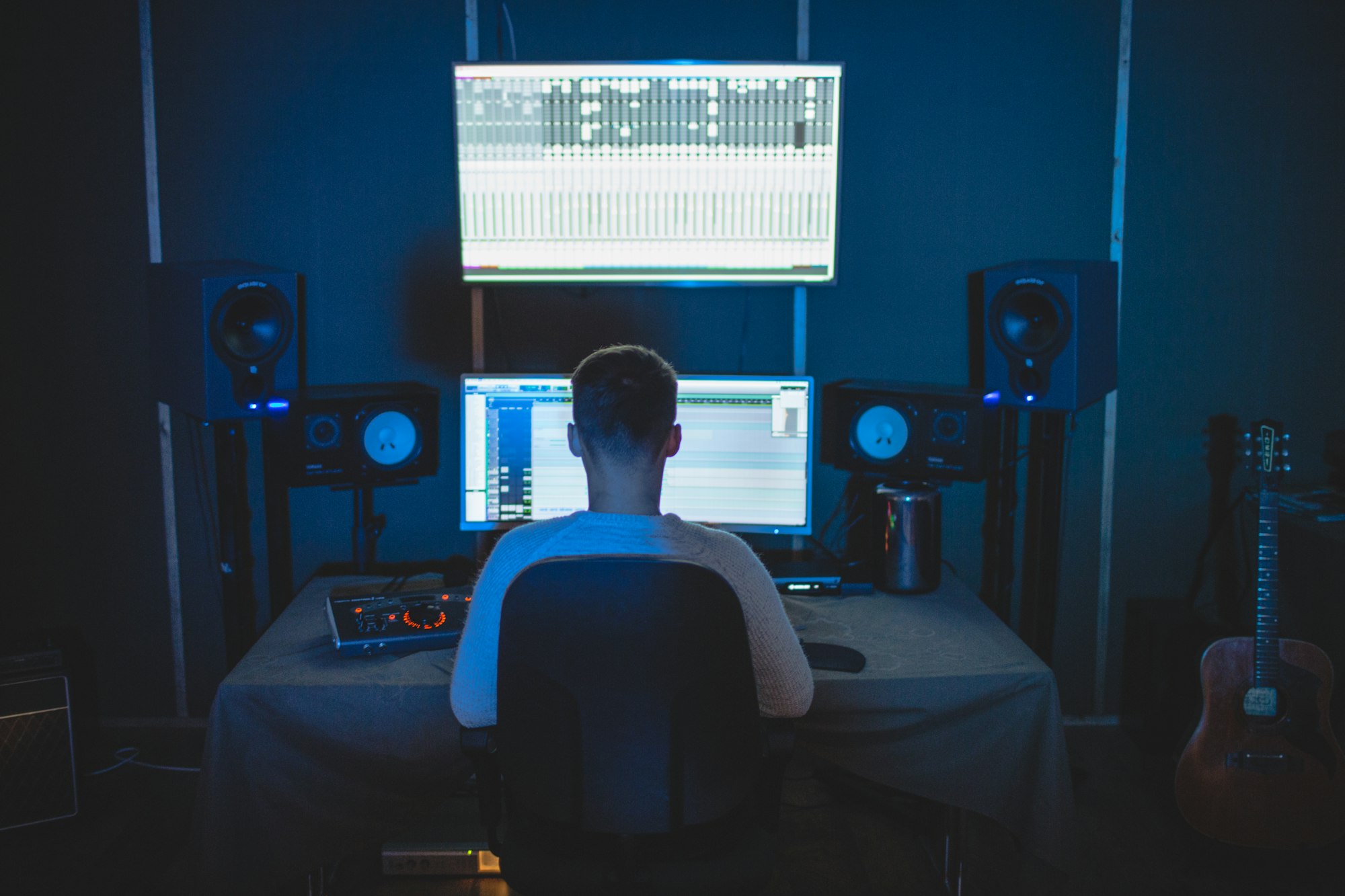What can Napster teach local news?
Just like the music industry almost 20 years ago, we are in the midst of a seismic shift in how our audience wants to consume our product.

Remember the music downloading controversy of the early 2000s? After Napster came out in 1999, record sales started to plummet. The recording industry sued Napster and its clones, and even individual downloaders. While the wisdom of filing mass lawsuits against an entire industry’s customers may seem questionable today, it highlights a common reflex for those in the same boat -- we have to appeal to those threatening our livelihood to stop, and support us again.
The problem, of course, was not that people no longer wanted music. Nor did they even decide en masse that they would no longer pay for it. They just did not want CDs -- people were burning their own CDs, or even getting MP3 players -- and it was a pain to go to a store, buy a CD, and then rip the CD -- so much easier to just download it, especially if you only wanted one song. Once iTunes came around, and offered legal downloads, the consumer base quickly switched. Now Spotify boasts 124 million paying subscribers, and most of us probably do not remember the last CD we purchased.
What does this have to do with journalism? Well, we are in the midst of a similar seismic shift in how our audience wants to consume our product.
Subscriptions are way down. Newspapers are furloughing reporters. Local news is in trouble -- in a time we need it the most.
There are valiant efforts currently underway, aiming to help -- donations, subscription drives, corporate philanthropy from the likes of Facebook and Google. All are well intentioned, though how sustainable can this really be?
The surprising part of this conundrum is that there is a huge demand for local news! Citizen -- an app that can best be described as “news adjacent” -- is #7 on the Apple App Store’s news section at the time of this writing. Nextdoor is #4. Neither produce traditional reportage -- but both answer the most basic question, “what is going on in my community?”
A Pew study shows a majority of Americans self-report getting at least some news from social media, even though most of them think it isn't trustworthy. There are presumably many reasons behind this, but I think one big one is that users want brief updates; they do not necessarily want to commit to whole articles or video pieces, let alone subscribing.
Further, most of these users do not care where the information is coming from -- the social numbers speak to that. To them, news is a commodity, and hard news is difficult to differentiate, especially while keeping it concise. Why is one article worth a subscription, when another on the same topic is available free?
Keeping it local
Local news is a particularly difficult sector. The media landscape is saturated, teeming with original reporting, aggregators, blogs, opinion, and specializations by topic -- though few of these publications address the basic question, “what is going on in my community?” -- the void which leads to the popularity of apps like Citizen.
Apps like that cannot provide context. They cannot provide journalism -- they focus on crime and emergencies, but no app is sitting in a community board meeting or reading through a municipal budget. Luckily, there are reporters that work for newspapers, TV stations, and digital native news outlets across the US -- even if there is a disconnect between the reporting and the audience.
That disconnect is what we want to address. Of course these outlets try to get their content out there -- and virtually all now employ some variation of an engagement editor or social media producer -- someone to give their headlines a leg up when their users scroll on their phones. But -- the game is rigged against them.
This is not a vast conspiracy theory -- there is no person sitting in a dark room in Silicon Valley trying to crush local media. Instead, there is a complete misalignment of incentives and priorities between the social networks and the aggregators and the publishers, regardless of how much they may speak of being partners.
First -- aside from some exceptions involving these tech companies directly writing checks to media outlets -- the publishers need traffic to their website in order to monetize their content. No number of likes can pay a journalist’s salary; retweets cannot pay rent. Users have to click through to trigger ad impressions -- or better yet -- subscribe.
And that is the first fundamental issue. Users want things brief. They are scrolling, and want to know what is going on. A well written headline can satisfy those requirements -- there may be no need to ever read more in an article -- and thus, no need to click through. This is the genesis of clickbait -- trying to trick a user into clicking through, rather than informing them.
Still, for this to be relevant requires the headline to actually make its way to a user -- and that is fundamental issue two.
Local news does not trend -- and definitely does not get the engagement that other stories do. Good local journalism may not trigger a user to share a headline -- it might not be cute or funny or maddening -- but that does not lessen its worth, just its virality.
Think back to when you last read a print newspaper. It might have been this morning, it might have been years ago. Still -- think about it. As you opened those giant pages, maybe fumbling to fold it to make it manageable on a train, maybe spread across a coffee table -- you were immediately greeted by headlines, photos, and ads. You could read an article to completion, or see a headline that provided an incremental update to a story you had been following. You flipped through, regulating the depth of your engagement on each article, but at every page turn being exposed to those ads.
Those ads still exist, and are still immensely profitable -- but they are now on the tech giants’ apps and websites -- and the revenue just does not make it back to the people doing the reporting.
Is this what users want?
That’s the problem from the perspective of publishers -- but maybe this is what our audience wants? They are voting with their clicks, of course -- aren’t they sending a message?
They are -- but how we interpret it matters. This is our Napster moment -- and right now we are reacting like the music industry, not iTunes.
Getting users to subscribe to your newspaper is great. Asking for donations and community support furthers a noble cause. But at some point, we need to accept that our audience just does not want to buy CDs anymore -- and we are not giving them an alternative. This is why they are on Nextdoor -- on Citizen -- on Reddit -- the list goes on.
At Nillium, we’re working on what we think is the answer -- a sort of neo-aggregator, one that aligns the incentives between us as a provider, our users, and our partner news organizations. It’s a simple idea -- give concise, local updates -- sourced and written by our partners -- and displayed in a scrolling interface with display ads in between -- and we share that ad revenue with the partners. Users get their updates, we display ads, and the partners get paid whether someone clicks through or not.
These are not the same articles that appear on their websites or in their apps. This does not compete with those properties -- because the updates are different, and so is the audience. We still want people to subscribe to their local newspaper (you really should be doing that now) -- and watch their local TV news. But for those who don’t -- those who just peek at their phones throughout the day to get an idea about what is going on? -- we want to give an answer that does not cannibalize the local news media.
But we know reporters and editors and all other newsroom workers are stretched thin. We cannot ask them to do more -- it’s a nonstarter. So, we’re looking to another industry for inspiration -- restaurants -- and their reservation partners like OpenTable or Resy.
Those providers can facilitate reservations because they operate systems in the restaurants (like ResyOS or OpenTable) that handle all reservations, made through their websites or a direct phone call.
Newsrooms have long had communication issues -- there is a running joke that “we’re a communications company that can’t communicate” in virtually every one -- and the challenges grew steeper in the last few weeks, as newsrooms became distributed during the quarantine. We built a tool just for this -- a tool for newsroom management, communication, and planning -- and are giving it to our partners for free. It handles everything before a draft article or script -- sort of a pre-CMS system, just for reporting.
The plan is to syndicate some of those updates into our aggregator -- creating no extra work for anyone, and hopefully making things easier -- and giving these newsrooms a shot at a new revenue stream. We can be the place users go for local news, and we want partners.
Napster is here. We can be iTunes.
Do you work in a newsroom that you would like to see on our platform? E-mail us - [email protected]

